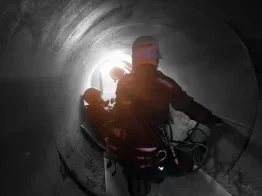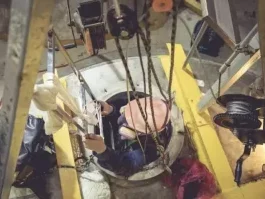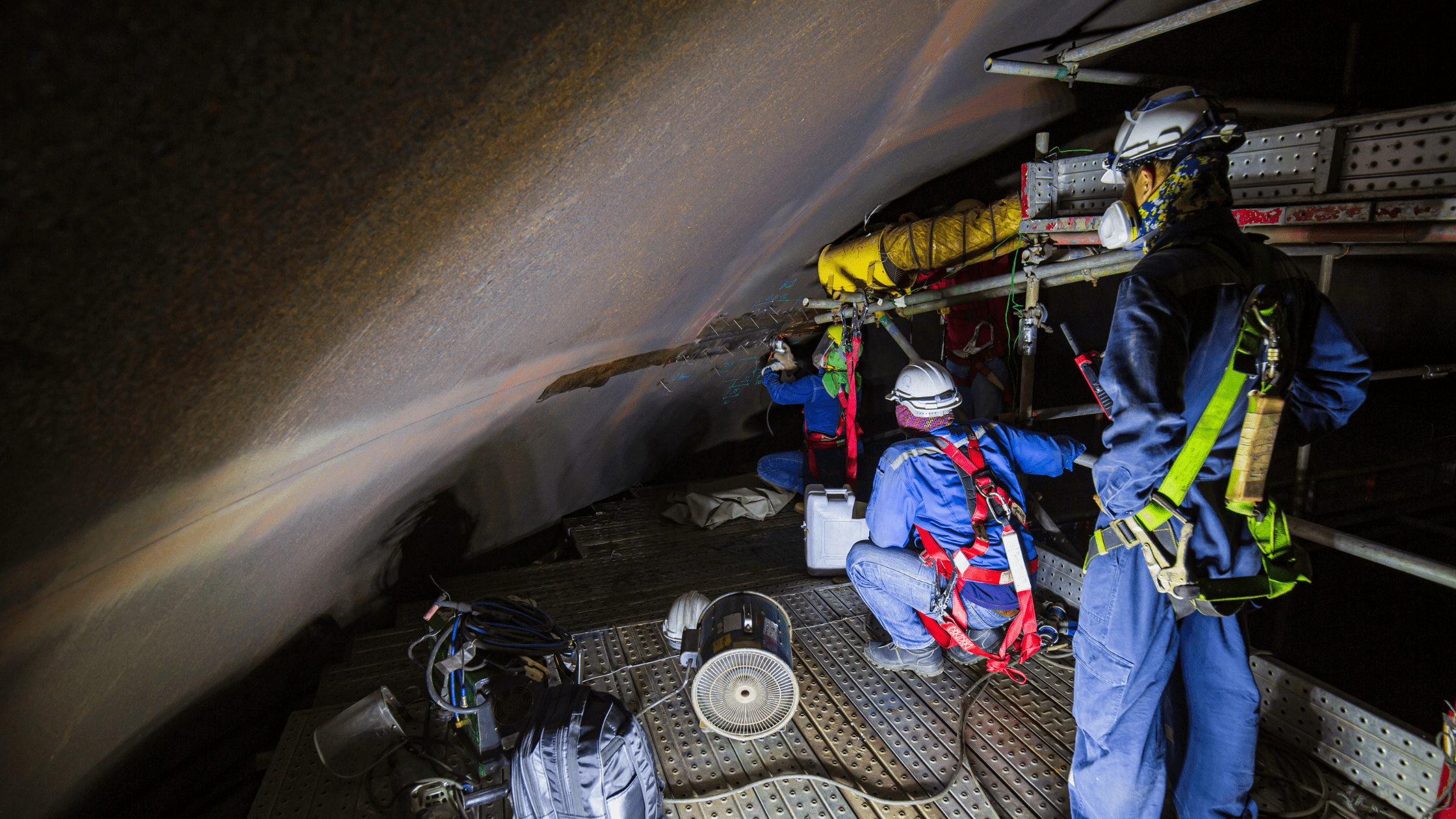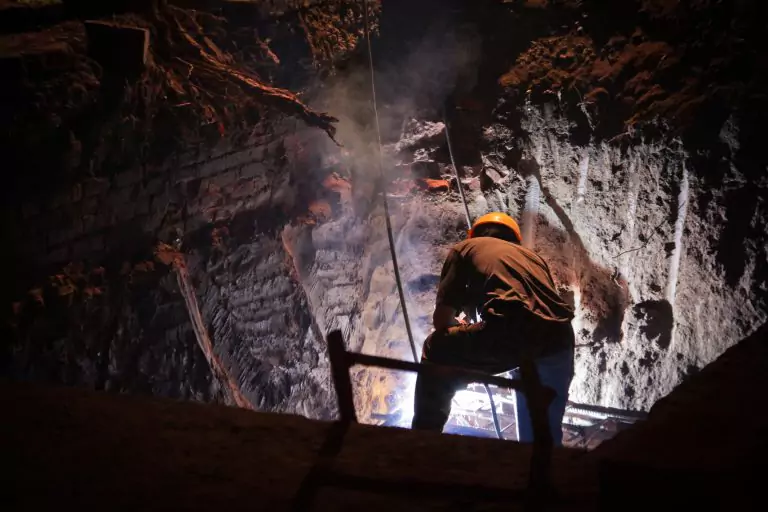Worker safety in confined spaces is of the utmost importance, as these spaces can present numerous hazards that can lead to severe injuries or fatalities. Several myths associated with working in confined spaces can lead to misunderstandings and unsafe practices. Here are some of the most common myths and the truth behind them:
Confined spaces are only found in industrial settings.
Truth: Confined spaces can be found in various settings, including industrial facilities, construction sites, utility sites, and even homes. Examples of confined spaces include tanks, vessels, sewers, tunnels, crawl spaces, and attics.
Only large, confined spaces pose a risk.
Truth: The size of a confined space does not determine its risk. Even small spaces can pose significant hazards, such as a lack of oxygen, toxic gases, or physical hazards like sharp objects or electrical equipment.
Confined spaces are only dangerous if they are poorly ventilated.
Truth: While proper ventilation is essential, many other hazards can occur in confined spaces. These may include hazardous atmospheres, combustible or flammable materials, engulfment, electrocution, or other physical threats.
Workers can enter confined spaces alone if they have a communication device.
Truth: Work Health and Safety regulations require that at least two workers be present when entering a confined space and that one worker is stationed outside the room to monitor and respond in case of emergency. This is because communication devices can fail or become unusable in certain conditions, such as in areas with poor reception or where loud noises make communication difficult.
Entry into confined spaces is safe if the air looks clear.
Truth: Many hazardous gases, such as carbon monoxide or hydrogen sulphide, are odourless and colourless and cannot be detected by sight or smell. Workers should always rely on calibrated atmospheric testing equipment to determine if a confined space is safe.
Confined space training is only necessary for entry personnel.
Truth: All workers entering or working around confined spaces should receive training on the hazards and procedures associated with confined space entry. This includes those who may not enter the area directly but who may work nearby or provide support during entry operations.
A rescue team is optional if the entry team follows proper procedures.
Truth: Even with proper procedures, emergencies can still occur during confined space entry. A rescue team with appropriate training and equipment should be readily available to respond in a crisis.
In conclusion, working in confined spaces can be hazardous, and it’s essential to understand the risks and take appropriate precautions. By debunking common myths and following established best practices for worker safety, employers can help ensure that workers remain safe and healthy when working in confined spaces.
Ensuring you Work Safety in Confined Spaces
Now that you know about the myths of working in confined spaces, you might wonder how to be an effective worker while promoting your safety. Here are some critical considerations for ensuring worker safety in confined spaces:
Proper Confined Space Training
All workers who enter or work in confined spaces should receive thorough training from a confined spaces course on confined space hazards, procedures, and the use of equipment. This confined space training should include hazard identification, atmospheric monitoring, lockout/tagout procedures, ventilation, and emergency rescue procedures. Workers should also be trained on adequately using personal protective equipment (PPE) such as respirators, harnesses, and lifelines.
Hazard Identification and Evaluation
Before entering a confined space, a thorough hazard assessment and evaluation should be conducted. This includes identifying potential hazards such as toxic gases, lack of oxygen, flammable materials, engulfment, falling objects, and other physical hazards. A written permit or entry plan should be developed and followed, outlining the identified risks, control measures, and emergency procedures.
Atmospheric Monitoring
Atmospheric monitoring should be conducted before and during confined space entry to ensure the air is safe to breathe. This includes testing for oxygen levels, combustible gases, and toxic gases. Monitoring should be conducted by trained personnel using calibrated equipment, and workers should be taught to interpret and respond to atmospheric monitoring results.
Ventilation
Proper ventilation is crucial in confined spaces to ensure a safe working environment. Ventilation can help remove hazardous gases, provide fresh air, and control temperature and humidity. Mechanical ventilation, such as fans or blowers, should be used to maintain adequate air quality and circulation.
Proper Equipment and PPE
Workers should be provided with appropriate equipment and PPE for confined space entry. This may include fall protection, respiratory protection, lighting, communication devices, and rescue equipment. Equipment should be regularly inspected, maintained, and used by the manufacturer’s instructions and industry standards.
Communication and Emergency Procedures
Effective communication is critical in confined spaces. Workers should establish precise communication methods, such as verbal or visual signals, and should have a system for emergency communication. A rescue plan, including procedures and equipment, should be in place and communicated to all workers involved in confined space entry. Workers should also know how to respond to emergencies and be trained in first aid and CPR.
Permit System and Authorised Personnel
Implementing a permit system for confined space entry can help ensure that only authorised and trained personnel enter the space. The permit system should include clear procedures for obtaining permits, conducting pre-entry evaluations, and implementing appropriate controls. Only licensed and trained workers should be allowed to enter confined spaces.
Regular Training and Review
Confined space procedures and training should be regularly reviewed and updated as needed. Workers should receive refresher training periodically to reinforce their knowledge and skills.
Safety Culture
Establishing a strong safety culture is essential for ensuring worker safety in confined spaces; it includes promoting a culture where workers feel empowered to raise safety concerns, promoting accountability, and proactively recognising and addressing potential hazards.
Enrol in Our Confined Spaces Course!
By following the best practices mentioned above, employers can help ensure the safety of workers in confined spaces and prevent incidents from occurring. It’s essential to prioritise worker safety and comply with established guidelines and regulations before any confined space entry.
The Australian Training Institute offers nationally recognised confined space training courses. Participants will gain the knowledge and skills to identify risks, review risk assessments and enter confined spaces in accordance with an issued work permit as well as issuing work permits to conduct work under the relevant legislation and Australian Standards for confined spaces. Participants will complete practical training in a simulated environment using the appropriate PPE and equipment.
Our confined space training includes an online training component that must be completed prior to attending your practical session. For more information, please visit our confined space course pages on our website, or give our friendly staff a call on 07 3269 5005.
View All Courses



